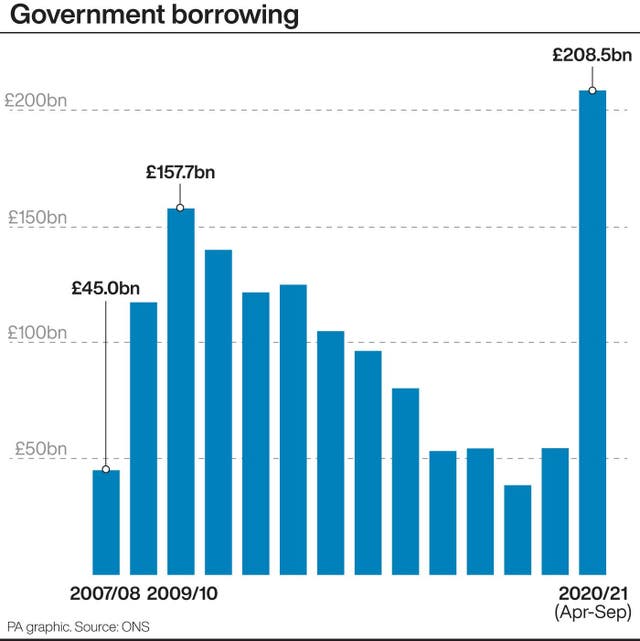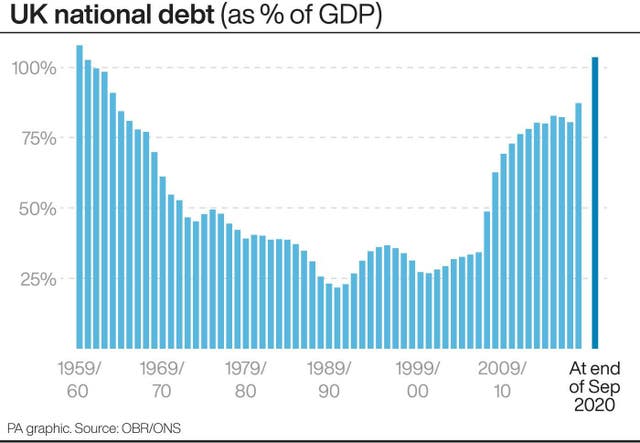
Matthew Wright 7am - 10am
22 October 2020, 16:04

Billions of pounds of extra help has been announced for firms and workers.
Chancellor Rishi Sunak has unveiled his latest package of support to help workers and businesses suffering due to the economic impact of coronavirus.
The package of new support measures could be worth billions of pounds and includes making the Job Support Scheme, which replaces the current furlough system, more generous and grants of £2,100 for firms in Tier 2 areas of England.
– How is it going to be paid for?
It is likely that the Government will have to raise the money by borrowing more from investors.
Even in normal times, taxes paid to the Government would not have been enough to cover the coronavirus response spending schemes, and added to that, the Government is collecting less tax because the economy is doing so badly.
Governments often borrow money. What is different now – although not unprecedented – is simply the sheer scale of that borrowing.
– Where does the cash come from?
Unlike when you ask your local bank for money to buy a house, the Government goes to lots of different places to get its hands on all the cash it needs.
It raises money by selling bonds – a promise to pay back the buyer, with interest, at the end of a fixed period.
These bonds are mainly bought by pension funds, banks, companies and people who see them as a very safe investment – safer in fact than putting cash in an account at the bank, because the bank could go bust.
1/ I’m introducing a new grants scheme for businesses impacted by Tier 2 restrictions, even if they aren’t legally closed.
I’m providing enough funding to give every business in hospitality, leisure & accommodation a grant worth up to £2,100 every month Tier2 restrictions apply. pic.twitter.com/HvVtz9WReq
— Rishi Sunak (@RishiSunak) October 22, 2020
– Is there a limit to how much we can borrow?
Technically, no. But it depends on whether lenders are willing to offer more.
If investors think there is a chance that the UK won’t be able to pay them back, the purse strings are likely to be tightened.
– How is it paid back and how much interest is paid?
Because the Government borrows from so many different places, the interest it pays varies a lot.
And because the bonds are considered such a safe investment, lenders such as banks and pension funds are often willing to accept really low interests – also known as yields.
Right now, for a variety of reasons, yields are at historic lows. In fact, in May the Government borrowed money at negative yields – meaning it was being paid to borrow money.

– How much has the Government borrowed during the pandemic?
Borrowing from April to September is estimated to have been £208.5 billion – £174.5 billion more than in the same period last year and the highest borrowing in any April to September period since records began in 1993, according to the Office for National Statistics (ONS).
Public debt rose by £259.2 billion in the first six months of the financial year to reach nearly £2.1 trillion at the end of September, or around 103.5% of gross domestic product (GDP), the ONS said.
This was the highest debt to GDP ratio since the financial year ending 1960, it added.
The Office for Budget Responsibility (OBR) has forecast that net debt will rise to 106.4% of GDP by the end of the financial year.
The OBR also forecasts that the Government could have to borrow between £263 billion and £391 billion in the year ending April 2021.
Job Support Scheme Closed will help businesses pay their employees’ wages if they are legally required to close due to coronavirus restrictions
– Government pays 67% of employees’ wages– Employers pay nothing towards wages pic.twitter.com/x7CvgsaODp
— HM Treasury (@hmtreasury) October 22, 2020
– Does this mean tax rises?
There are no plans to start paying back the money anytime soon.
When the Government finally decides to pay down its debt, it will likely have to use tax money to do so.
Tax receipts have decreased because of drops in the amount of business rates, corporation tax and VAT collected.
Central Government tax receipts were estimated to be £37.7 billion in September, £6 billion less than in September 2019, according to the ONS.

The Institute of Fiscal Studies think-tank warned earlier this month that tax rises of more than £40 billion a year will be needed during the middle years of this decade to stop debt spiralling upwards.
However, the Conservatives’ 2019 manifesto promised not to raise the three biggest taxes – income tax, VAT or National Insurance – so any increases would be breaking these pledges.
– Are there other ways to pay it back?
The other main option is to cut back on public spending.
A lot of the easy spending cuts have been made over the last decade and in the midst of the pandemic the Government is unlikely to cut budgets such as healthcare which have previously been protected.
But it is possible that a new round of austerity could be introduced once the pandemic is over.